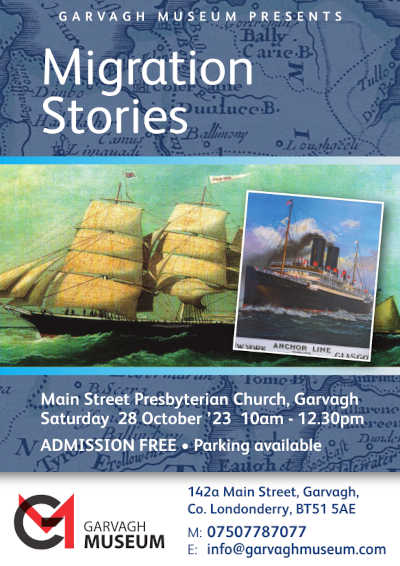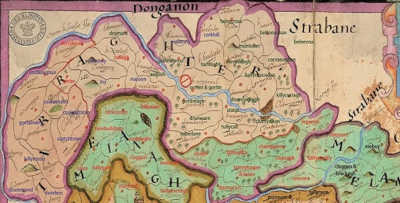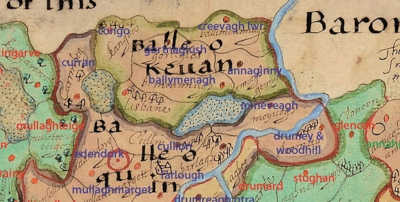We are delighted to announce the addition of 1539 baptismal records and 362 marriage records in County Tipperary for the Roman Catholic parish of Clerihan, 1852-1900. For an up to date list of sources for South Tipperary and to search these records, go to tipperarysouth.rootsireland.ie and login or subscribe as required.
Special 25% Discount on Annual Subscriptions!

To avail of this offer just go to the following link and login using your existing RootsIreland login details: http://www.rootsireland.ie. If you currently have a subscription, click My Account, My Subscription and Start a New Subscription. The special deal subscription will then begin once your current subscription runs out.
Why take out a subscription with RootsIreland?
- RootsIreland have the most complete and most accurate set of Roman Catholic church records online. Our index is easily searchable and has features such as standardised surname and forename searches which make your searches even more user-friendly.
- We hold over 23 million records which is being added to continually. In 2023 so far, we have added almost 118,000 records to our database from Kerry, Limerick, Cork, Clare, Monaghan, East Galway, West Galway, South Mayo, South Tipperary, Armagh and Galway West. New records are continually being added to our database throughout the year.
- Together, our 31 genealogy centres have an unparalleled amount of local knowledge which can be invaluable to those tracing their ancestors, a service which no other website or company can provide to such a high standard. By taking out a subscription with RootsIreland, you are helping these centres to continue to provide a world-class service and securing many Irish jobs.
If you have any questions please check our Help section and if this does not provide an answer, then you may contact us or one of the county centres. You can check what is available on our site for each county here.
*Offer applies from 23 November 2023 to 12 midnight Irish time on 11 December 2023 only. Cannot be used in conjunction with any other offer.
New Cork records added
We are delighted to announce the addition of 4,778 new Cork RC baptismal and marriage records to the Roots Ireland database! These are all additions of further years to existing parishes, and
the exact details are below.
| BAPTISMS | MARRIAGES |
| Parishes – Updated | Parishes – Updated |
| Ballyclough – 1923 | Ballyclough – 1948 |
| Ballyhea – 1923 | Ballyhea – 1948 |
| Banteer – 1923 | Banteer -1948 |
| Blarney – 1923 | Blarney – 1948 |
| Buttevant – 1905 | |
| Carrigtwohill – 1923 | Carrigtwohill – 1948 |
| Castlemagner – 1923 | Castlemagner- 1948 |
| Conna -1948 | |
| Castletownroche – 1923 | Castletownroche – 1937 |
| Charleville – 1907 | Charleville – 1948 |
| Doneraile – 1923 | Doneraile – 1948 |
| Fermoy – 1923 | Fermoy – 1948 |
| Kanturk – 1923 | Kanturk – 1926 |
| Kildorrery – 1923 | Kildorrery – 1948 |
| Newmarket – 1923 | Killavullen – 1948 |
| Macroom – 1923 | Macroom – 1944 |
| Mallow – 1923 | Mallow – 1948 |
| Meelin – 1923 | Meelin – 1948 |
| Milford – 1923 | Milford – 1948 |
| Mourneabbey– 1923 | Mourneabbey- 1943 |
To access these records, go to corknortheast.rootsireland.ie and login or subscribe as required.
Unlock Your Irish Ancestry
Unlock Your Irish Ancestry:
Register for an Online Genealogy Course Today!

Take the time this winter to further explore your family history, gain a better understanding of the archives and genealogical sources in Ireland and find your elusive Irish and Scots-Irish ancestors.
Ulster Historical Foundation’s upcoming online Irish Genealogy Essentials course offers everything you will need to know about specific aspects and topics in Irish genealogy and will provide you with the tools and information needed to further explore your Irish family history.
- **New for 2023**: Get the chance to sit down and have a virtual one-to-one consultation with one of Ulster Historical Foundation’s genealogists. During the consultation you will receive personal research advice and guidance from an experienced member of our dedicated team who will use their knowledge and archival experience to try to help solve your family tree puzzle. The personal consultations will be scheduled once the course has concluded.
- Explore Your Roots from Anywhere: The beauty of this online course is that it can be accessed from the comfort of your home, regardless of where you are in the world. No need to travel or make time-consuming visits to archives and libraries; we bring Ireland’s history and your ancestors to your fingertips.
- Learn from the Experts: Irish Genealogy Essentials is led by seasoned genealogists and researchers who have the knowledge and expertise to break down any brick walls you may have encountered and assist you in your family history research.
- Comprehensive Programme: This course consists of 21 pre-recorded lectures (over 28 hours of content) on essential topics relating to Irish genealogical research. Topics include: Irish land divisions; Church Records; Landed estate papers; Census substitutes; and much more.
- Interactive Discussions: Engage in lively discussions and ask questions to the course lecturers during the different Q and A sessions that will be scheduled during the programme. Connect with a like-minded community, ask questions, and learn from one another.
- Practical Skills: This course doesn’t just give you information; it equips you with practical skills. You’ll learn how to critically analyze sources, and discover how to navigate the challenges of Irish family history research
- Take the First Step: Don’t let the ‘apparent’ complexities of Irish genealogy deter you. Register today and gain the knowledge and confidence you need to tackle your research projects effectively.
- Cost: Priced at £374.99 this Irish Genealogy Essentials online course takes all the key components of Ulster Historical Foundations normal in-person courses and makes them available digitally
- EXTENDED Course Dates: 22 November 2023 – 31 January 2024 (previously scheduled to end on 17 January 2024)
New Galway Workhouse baptismal records added to Roots Ireland
We are delighted to announce the addition of 924 baptisms of children born in Galway Union Workhouse between 1853 and 1922! These are most Roman Catholic, with a small number of Church of Ireland entries as well, and give an important insight into baptisms which took place outside the normal parish system in Galway in the post-Famine period up until the creation of the Free State in 1922. To access these records, go to galwaywest.rootsireland.ie and login or subscribe as required.
Migration Stories
On Saturday 28 October, Garvagh Museum in County Derry will host a conference on the theme of migration from Ulster from the seventeenth to the twentieth centuries. Brian Mitchell and
Dr William Roulston, from our Derry and Antrim/Down Centres respectively, will be speaking at this event. For further details, click the image below.

Townland Atlas of Ulster
The Townland Atlas of Ulster
Researchers and genealogists looking into their Irish family history have long felt need for a comprehensive townland atlas to give context to their findings and assist their research.

The Townland Atlas of Ulster, a new publication from Ulster Historical Foundation, will provide an invaluable guide to the newcomer to the townland system as well as opening up the world of seventeenth-century records to the serious researcher.
In preparing just such a publication, and to greatly increase its value and utility to the researcher, it was decided to base the atlas on 17th-century grants and landed estates for a number of reasons:
- The landholding pattern established in the 17th century largely survived into the 20th century when the full effect of the Land Purchase Acts changed things radically;
- To draw attention to the large body of material still surviving from that period;
- To demonstrate the continuity of the townland as a fundamental unit of Irish life, which was ancient when Bodley produced his maps before the Plantation of Ulster.
- The origins (and subsequent acquisitions) of the seventeenth-century landlords gives us valuable insight on the migrations (both external and internal to Ulster) of their tenants.
The compilation of the maps and (more importantly) the index has involved a close study of the following sources:
- Bodley maps, 1609
- Plantation grants, c. 1610
- Inquisitions
- Post plantation surveys, 1611–22
- The muster rolls, c. 1630
- Civil survey, 1650s
- Down Survey, 1650s
- Books of Survey and Distribution, 1660s–80s
- ‘1659 census’
- Hearth Money Rolls, 1660s
- Estate papers.
None of these sources gives a complete view of the nine counties forming the province of Ulster and one of the aims is to provide a reference work with a consistent naming system to allow easier access to the rich seventeenth-century materials for those who have not had the privilege of studying them in detail.
Brightly coloured maps have been produced for each of the 78 baronies (with every townland named) showing the civil, Anglican and Roman Catholic parish boundaries and the all-important estates. The narrative explains the relevance of each different land division and what records were kept at each level. The evolution of parish boundaries from the 17th century are briefly traced and there are notes on each estate to enable them to be found in primary records.
The Atlas provides an invaluable guide to the newcomer to the townland system as well as opening up the world of seventeenth-century records to the serious researcher. Although it represents a snapshot in time, it is a dynamic snapshot – of relevance to the last 400 years of our history and society.
The early 17th Century was a time of great turbulence in our society, but also of continuity. Most importantly to us, it was a time of diligent record keeping which we can access today to understand better where we have come from. From the licence to distil whiskey in 1608 to the statistics which even then oiled the wheels of government, we can recognise our modern world in the records of 400 years ago.
Fundamental to ‘place’ is (or was) the townland – confusing to outsiders (and now many of us locals) this unit of land has been in use for centuries, from the 12th-century land grants of mediaeval monasteries to the line on your domestic rates bill today. Until the mid-20th century (and much later in some localities), rural addresses were given exclusively by townland and the road names and numbers we use today were meaningless to country dwellers. Small enough to be personal in scale but significant enough for government use, townlands stood the test of time until the processing power of computers and our increasingly mobile and urbanised society brought in postcodes and an increasing number of administrative divisions adrift from our history.
This publication maps all 16,000 townlands in the 9 counties of Ulster and the administrative units of church and state into which they have been organised. In an attractive and easily understood layout, these units are shown in the context of land ownership in the 17th century, a pattern clearly recognisable until a century ago when the Land Purchase Acts broke up the estates and facilitated tenant farmers buying their own land. By using the maps and index, family and local historians can easily grasp the essentials of our ancestors’ lives – where they worked, paid their rent, went to church and market, etc.
This is an essential reference guide for both newcomer and serious researcher, showing exact locations and where to look for related records. This material has never been collated for the entire province before.
ABOUT THE AUTHOR
Andrew Kane works as a Research Consultant for the Ulster Historical Foundation handling a wide range of, mainly genealogical, commissions and assisting in delivering their course programmes. He is a Trustee of the North of Ireland Family History Society and active member their Causeway Coast and Glens Branch committee. He is also a member of several other local history groups in the Coleraine area where his family have lived for at least 12 generations. He has published the well-received Town Book of Coleraine and contributed to several genealogical journals and magazines. He has given talks on local history around Ulster and been a contributor to several television and radio programmes at home and abroad.
BOOK DETAILS
- ISBN: 978-1-909556-89-8
- PAGE SIZE: 305mm x 215mm
- EXTENT: Approx. 384pp, including 130pp of full colour maps
SUBSCRIPTION OFFER – ENDS 31 MARCH 2024
Ulster Historical Foundation would like to invite subscribers to this major new work. You can support the project by being a:
- Benefactor (for donations of £500+)
- Patron (for donations of £250+)
- Donor (for donations of £100+)
- or Subscriber (for donations of £50+).
Benefactors, Patrons, Donors and Subscribers will have their names printed in a special list in the book and be the first to have their copies despatched on the day of publication. Expected publication date is financial year 2024/25
Note: local subscribers can collect their copies in person from the Ulster Historical Foundation’s offices. Alternatively, assuming an in-person launch event will go ahead subscribers may be able to collect their copies at the launch (details for the event will be issued in due course).
Click here to Subscribe

New Kerry Records Added!
We are delighted to announce the addition of 5,419 new Kerry Roman Catholic baptismal records for the parish of Annascaul to our database at Roots Ireland! They are as follows:
- Annascaul baptisms: 1819-1899 (5,419 records).
For an up to date list of sources for Kerry and to search these records, go to kerry.rootsireland.ie and login or subscribe as required.
New South Tipperary Records
We are delighted to announce the addition of 2227 marriage records in County Tipperary for the Roman Catholic parish of Boherlahan & Dualla, 1810-1900. For an up to date list of sources for South Tipperary and to search these records, go to tipperarysouth.rootsireland.ie and login or subscribe as required.
Special Offer – 25% off Annual Subscriptions!
Discover your Irish roots by taking out a 12-month subscription for Roots Ireland with a 25% discount from 2nd September to 17th September 2023!*

To avail of this offer just go to the following link and login using your existing RootsIreland login details: http://www.rootsireland.ie. If you currently have a subscription, click My Account, My Subscription and Start a New Subscription. The special deal subscription will then begin once your current subscription runs out.
Why take out a subscription with RootsIreland?
- RootsIreland have the most complete and most accurate set of Roman Catholic church records online. Our index is easily searchable and has features such as standardised surname and forename searches which make your searches even more user-friendly.
- We hold over 23 million records which is being added to continually. In 2023 so far, we have added over 100,000 records to our database from Kerry, Armagh, Mayo, Clare, Cork, Tipperary, Limerick, Monaghan and Galway. New records are continually being added to our database throughout the year.
- Together, our 34 genealogy centres have an unparalleled amount of local knowledge which can be invaluable to those tracing their ancestors, a service which no other website or company can provide to such a high standard. By taking out a subscription with RootsIreland, you are helping these centres to continue to provide a world-class service and securing many Irish jobs.
If you have any questions please check our Help section and if this does not provide an answer, then you may contact us or one of the county centres. You can check what is available on our site for each county here.
*Offer applies from 2 September 2023 to 12 midnight Irish time on 17 September 2023 only. Cannot be used in conjunction with any other offer.
- « Previous Page
- 1
- 2
- 3
- 4
- 5
- …
- 22
- Next Page »